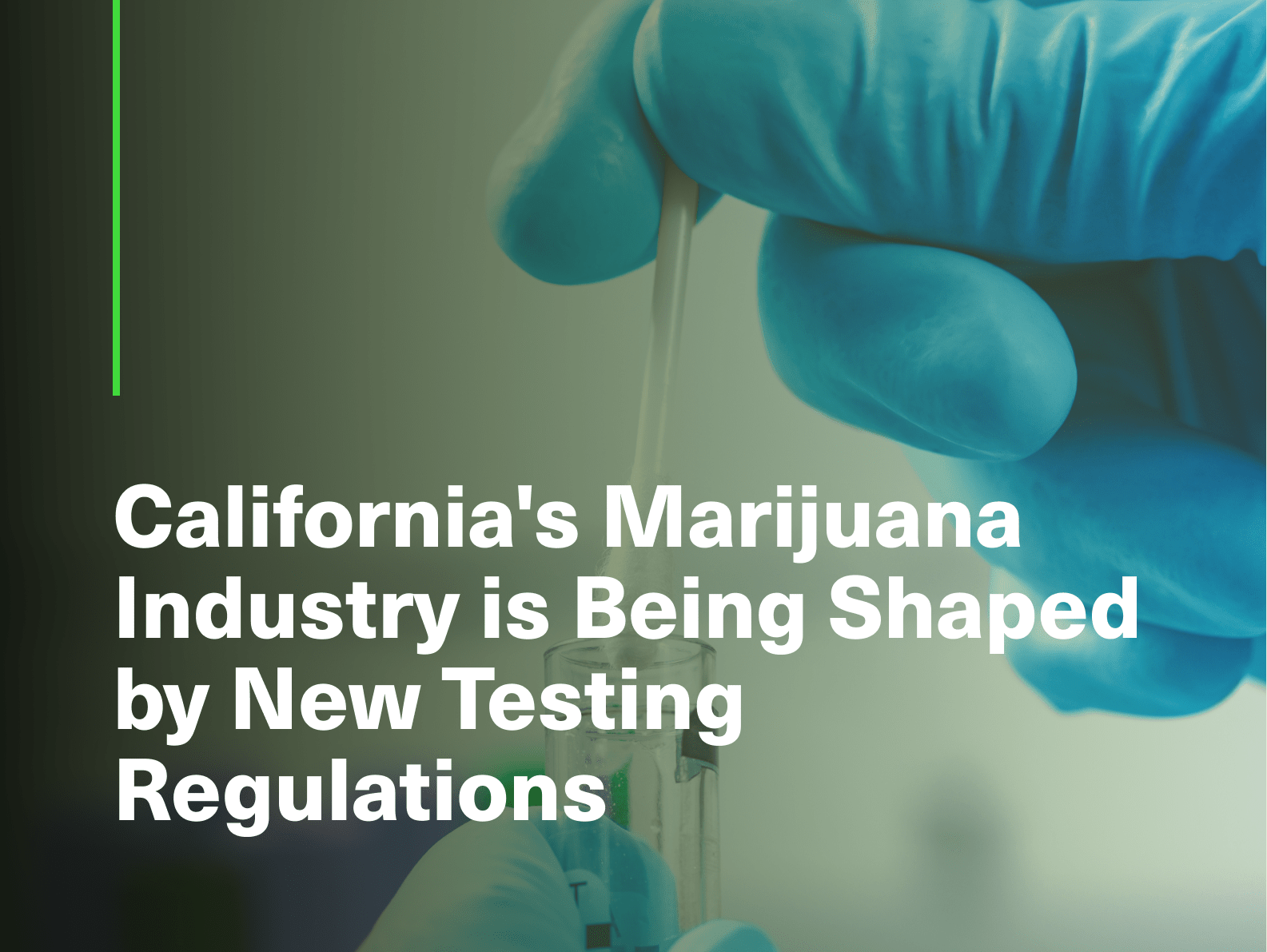As the new era of legal cannabis progresses, our firm continues to provide unparalleled business strategy and license consultation services to clients pursuing a California cannabis manufacturing license. For prospective clients, our cannabis consultants have provided the following brief overview to help you understand the process of setting up your own manufacturing operation legally. Our review covers the following points:
- Brief review of California’s marijuana laws, including the following:
- The Compassionate Use Act (CUA) (Proposition 215)
- The Medical Marijuana Program Act (MMP) (SB 420)
- The Medical Cannabis Regulation and Safety Act (MCRSA) (AB 243, AB266, SB643)
- The Adult Use of Marijuana Act (AUMA) (Proposition 64)
- The Medical and Adult Use of Cannabis Regulation and Safety Act (MAUCRSA) (SB 94)
- The Federal Controlled Substances Act (CSA)
- The Cole Memo and Farr Rohrabacher Amendment
- Takeaway Message
- How operating a marijuana manufacturing business has changed under California law
- Steps you will need to take to get a cultivation license in California
- Anticipated marijuana cultivation start-up costs
- Brief Review – Over the past 21 years, California has experienced a major shift in policy related to production, distribution, possession, and use of marijuana. While it is legal to operate a marijuana manufacturing business, it is important to understand the evolution of state law and how it is radically changing the industry.
- The Compassionate Use Act (CUA) – Starting in 1996, California voters approved Proposition 215, also known as the Compassionate Use Act (http://www.canorml.org/medical-marijuana/patients-guide-to-california-law), which exempts patients from prosecution for a controlled substance if they obtained a recommendation from their doctor to use marijuana for their medical needs. This law marked the first time in U.S. history that a state legalized marijuana in opposition to the U.S. Controlled Substances Act. However this law did not mention marijuana manufacturing or cannabis concentrates and did not include any supporting guidelines indicating how much or where this marijuana would be grown, whether patients could distribute marijuana to other patients with a doctor’s recommendation, what permits or licenses would be needed, whether taxes should be paid, and many other questions.
- The Medical Marijuana Program Act (MMP) (http://www.canorml.org/laws/sb420.html) – The MMP was subsequently passed in 2004 by California legislature (http://www.legislature.ca.gov/). The law allows each patient to possess up to eight ounces of dried marijuana and cultivate six mature or twelve immature marijuana plants, unless a local ordinance, or doctor authorizes more. In addition, the MMP established the right to collective and cooperative cultivation of medical marijuana. In 2008, then State Attorney General Jerry Brown issued a white paper (https://oag.ca.gov/news/press-releases/atty-general-brown-issues-medical-marijuana-guidelines-law-enforcement-and) further clarifying that a collective or cooperative could only be considered legal if it incorporated as a California mutual benefit non-profit corporation. The California State Board of Equalization, now known as the California Department of Tax and Fee Administration (DTFA) (https://www.cdtfa.ca.gov/industry/cannabis.htm) also determined that marijuana providers would need to first obtain a seller’s permit and then pay sales tax for retail transactions. Yet this system still did not address how marijuana businesses should interact with each other, or with the city and county governments in which they were located. The latter issue culminated in a California Supreme Court decision in 2013 (http://www.canorml.org/medical_marijuana/RiversideRuling.pdf) giving local governments the power to zone medical marijuana dispensaries and other cannabis businesses out of existence.
- The Medical Cannabis Regulation and Safety Act (MCRSA) (http://www.canorml.org/news/A_SUMMARY_OF_THE_MEDICAL_MARIJUANA_REGULATION_AND_SAFETY_ACT) – In October 2015, California state legislators and the governor approved the MCRSA, a significant milestone in regulating marijuana. Essentially, the law established a robust dual licensing system that requires all cannabis businesses in the industry, including marijuana manufacturing, to obtain a state license appropriate to their activities. In addition, the MCRSA requires licensees to first obtain approval from the local government where their business is located (https://static.cdfa.ca.gov/MCCP/document/Comprehensive%20Medical%20Cannabis%20Regulation%20and%20Safety%20Act.pdf). After almost two decades of operating in a legal gray area, the MCRSA finally gave cannabis operators a clear path for legally operating their businesses at the local and state levels.
- The Adult Use of Marijuana Act (AUMA, Proposition 64) (http://www.canorml.org/news/what_will_be_legal_and_what_wont_after_Prop_64) – November 2016 marked a new paradigm for the cannabis industry in California with the passage of Proposition 64, or the Adult Use of Marijuana Act (https://www.cacities.org/Resources-Documents/Policy-Advocacy-Section/Hot-Issues/Adult-Use-of-Marijuana-Act/AUMA-FAQ_Final.aspx). This new law allows and regulates the adult use of marijuana for recreational purposes, distinguishing the entertainment value from those who use the drug for medicinal purposes. This new law approves a similar licensing structure as that proposed under MCRSA and allows users to purchase and possess up to one ounce of dried marijuana, or eight grams of concentrates, or any combination thereof.
- The Medical and Adult Use of Cannabis Regulation and Safety Act (MAUCRSA) – In June 2017, California legislators and the governor approved the Medical and Adult Use of Cannabis Regulation and Safety Act. This law streamlines the policies for both medical and adult use into one system that only requires and M or A used as designation. While adult and medical licensees can only sell to other businesses with the same M or A designation, this law allows greater flexibility with regard to vertical integration opportunities.
- The U.S. Controlled Substances Act (CSA) – The federal Controlled Substances Act (https://www.deadiversion.usdoj.gov/21cfr/21usc/) remains in effect for the foreseeable future as the federal government continues to grapple with the debate over rescheduling marijuana. While cannabis is recreational and medical legal in half of the U.S. states, federal prosecution remains a concern.
- The Cole Memo and Farr Rohrabacher Amendment (https://www.justice.gov/iso/opa/resources/3052013829132756857467.pdf) (https://mjbizdaily.com/rohrabacher-blumenauer-amendment-extended-december) – These two significant federal legislative documents have served to relieve cannabis businesses from federal prosecution if they adhere to state medical and recreational laws. Until attorney general Jeff Sessions recently rescinded the Cole Memo, https://mjbizdaily.com/marijuana-businesses-rush-decipher-sessions-decision-legal-experts-advise-caution/, this document redirected federal policy away from prosecution of cannabis businesses in states with a robust regulatory system that polices the cannabis industry. Similarly, the Farr Rohrabacher Amendment has eliminated federal funding for prosecution of medical and adult use businesses in compliance with state and local cannabis laws. Most recently, senator Cory Gardner of Colorado has indicated that Sessions and the Trump administration will not pursue the legal cannabis industry after all (https://www.marijuanatimes.org/colorado-senator-says-trump-pledged-to-leave-state-legal-cannabis-alone/). While it remains to be seen what will happen next at the federal level, states that have legalized cannabis are holding steadfast in supporting their respective cannabis regulations and even U.S. Congress members have indicated similar support http://www.newsweek.com/marijuana-supported-americans-except-sessions-republicans-778530.
- Takeaway Message – A well-defined and executed state and local regulatory system significantly reduces the likelihood of federal prosecution.
- How manufacturing marijuana has changed under California law
- Proposition 215
(http://www.canorml.org/medical-marijuana/patients-guide-to-california-law) and SB 420 (http://www.canorml.org/laws/sb420.html) created a business landscape for the California cannabis industry marked with limited legal structure, no access to institutional banking systems, minimal oversight except from police, and little incentive to pay taxes. The only legal entity structure was the collective and cooperative model, which has no established legal framework for addressing the transfer of goods and services between collectives. Consequently, every transaction between parties (grower selling to dispensary for example) is technically an illegal transaction unless they are both members of the same collective. With a small number of individuals, the collective model would work. However, with over 39 million people in the state of California, it is impractical for a collective to be liable for every cultivator from whom they receive products. - The state’s new licensing structure under MAUCRSA establishes a clear framework for how businesses within the legal cannabis industry should operate and interact with each other. Three state agencies, including the Bureau of Cannabis Control (http://bcc.ca.gov/), Department of Food and Agriculture (http://calcannabis.cdfa.ca.gov/), and Department of Public Health (https://www.cdph.ca.gov/Programs/CEH/DFDCS/Pages/MCSB.aspx), are responsible for administering 26 license types issued to cannabis operators active in every activity involved with creating consumable cannabis products. Cannabis is first produced by a licensed cultivator who then transfers the harvested crops slated for the manufacture of cannabis products to a licensed manufacturer. The manufacturer then extracts oils cannabinoids, and other materials out of the raw plant matter and refines them into a variety of finished consumable products such as vape cartridges, tinctures, edibles, topicals, and others. These products are then transferred to a licensed distributor who conducts a quality assurance/control process, including facilitating testing with an independent licensed cannabis laboratory, before transporting products to licensed cannabis retailers.
- While manufacturing cannabis products has been a part of the industry for a long time, doing so has been punished even more severely than cultivation or distribution. Manufacturers have only recently been able to openly conduct their activities and those who wish to do so must first obtain the proper approvals from several local and state government agencies.
- Proposition 215
- Steps you will need to take to get a manufacturing license in California
-
- Land Use Permit and Business License – While it is now possible to get a cannabis manufacturing license in California, operators must first obtain approval from their local city or county government to operate at their location. Cities and counties in California are the primary authority regulating the use of land. Cannabis businesses therefore need to obtain approval to operate on a property. A good cannabis consultant will have experience in obtaining land use permits and business licenses, which require a business plan, floor plan, site plan, security plan, community relations plan, and financial analysis. Marijuana manufacturing businesses are particularly scrutinized by the police and fire departments, as manufacturing processes must be deemed safe for employees and adjacent tenants or properties.
- Environmental Assessment – Local governments are required to assess whether your project has the potential to impact the environment. Most marijuana manufacturing operations locate on commercial or industrial properties with existing facilities. While these facilities may require improvements, most involve minor alterations that do not pose any potential environmental impact. However, if establishing your manufacturing operation involves site or building construction, your city or county will need to conduct an environmental review, which costs you more money (http://resources.ca.gov/ceqa/guidelines/Appendix_G.html).
- Building Permits and Certificate of Occupancy – Once your business has been approved to operate in a city or county, you will likely need to improve your facility. Manufacturing operations typically require significant investment in equipment, fixtures, furnishings, and lab-grade room build-outs. Unless you have the skillset to handle this work yourself, you will need to hire an architect and/or engineer, as well as one or more contractors. These individuals will help you prepare plans, pull building permits, complete the work, and pass inspections to ultimately obtain a certificate of occupancy (CofO), allowing you to use the building.
- State Manufacturing License – Once you have received local approval, you can apply for a California cannabis manufacturing license. Manufacturers must obtain a license from the Department of Public Health (https://www.cdph.ca.gov/Programs/CEH/DFDCS/Pages/MCSB.aspx), while cultivators apply to the Department of Food and Agriculture (http://calcannabis.cdfa.ca.gov/), and retailers, distributors, microbusinesses, and testing labs will need to apply to the Bureau of Cannabis Control (https://aca5.accela.com/bcc/Welcome.aspx).
-
- Anticipated marijuana manufacturing start-up costs
- There are many steps needed to get a California cannabis manufacturing license and each takes significant time and effort. You can complete these steps yourself if you have the skill and experience to do so, or hire a cannabis consultant to help you. Whichever way you choose, it is important to ensure that preparation of your permitting and licensing documents is completed accurately and with a strategy in mind of how your business will operate. Errors, omissions, or lack of preparation will lead to processing delays or rejections from regulatory agencies, as well as a poorly run business.
- Costs for a California cannabis manufacturing license can be broken down into basic categories you can use to decide whether this is the venture for you:
- State cannabis license fee – $1,000
- State cannabis annual fee – $2,000 – $75,000 (Depends on income)
- Land Use Permit and Business License – $5,000 – $30,000 (Depends on project/license activities)
- Environmental assessment – $0 – $20,000 (Depends on project)
- Building Permits – $500 – $10,000 (Depends on improvements)
- Consulting fees – $40,000 – $80,000 (Depends on task size and quantity)
If you are interested in getting your marijuana manufacturing business started and need some help, please call or email us to set up a free half hour consultation with one of our expert cannabis consultants.







